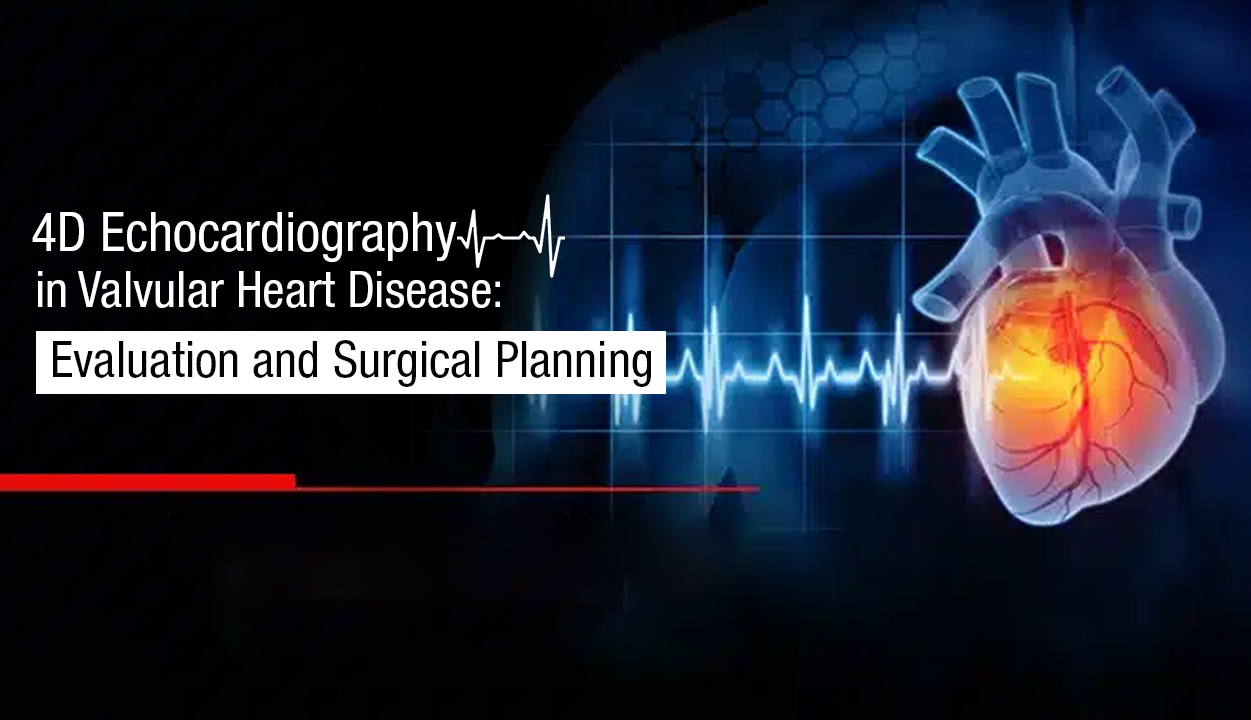
4D Echocardiography in Valvular Heart Disease: Evaluation and Surgical Planning
Valvular heart disease is a condition where the heart’s valves don’t work correctly. For those living with this condition, daily life can often be challenging. Tasks that seem ordinary, such as climbing stairs, walking the dog, or carrying groceries, can leave them feeling breathless and exhausted. Simply put, their heart struggles to maintain the regular rhythm of pumping blood efficiently through the body, which can often turn life-threatening. Today we shall talk about valvular heart disease with respect to how effective 4D Echocardiography is as a diagnostic and surgical planning tool.
Valvular Heart Disease Diagnosis Methods: Decoding the Heart
Standard valvular heart disease diagnosis methods include physical examinations, electrocardiograms, and traditional echocardiograms. However, when it comes to the detailed assessment and understanding of valvular issues, the benefits of 4D echocardiography outweigh those of other diagnostic methods. The high-resolution images and real-time views of the heart provide doctors with more comprehensive data, which is invaluable for precise diagnosis.
4D Echocardiography: What the Excitement Is About
4D Echocardiography is a cutting-edge technology that, quite literally, adds a new dimension to the field of cardiac care. It allows doctors to visualise the heart in action in exquisite detail, not merely as a pumping organ but in a nuanced, dynamic way, in real-time. It’s a critical innovation that aids in diagnosing and treating valvular heart disease, making it possible to map the heart’s functioning like never before.
4D Echocardiography Benefits: More than a Peek into the Heart
4D echocardiography benefits are particularly numerous when it comes to evaluating cases of valvular heart disease. Unlike traditional 2D imaging, 4D echocardiography gives doctors a dynamic 360⁰ view of the heart and its valves. They can see how the valves open and close in real time, making it easier to pinpoint any abnormalities. Moreover, the benefits include the ability to assess the heart’s structure and functioning status more accurately, which is vital in the diagnosis and treatment of the condition.
Surgical Planning: Navigating Valvular Heart Disease Treatment Options
After diagnosis, doctors must decide on the best available Valvular heart disease treatment options. Proper surgical planning for valvular heart disease is crucial for successful outcomes. The wealth of information provided by 4D echocardiography plays a pivotal role here. Technology advancements in 4D echocardiography enable doctors to tailor the plan, taking into account the specific condition and needs of the patient. Whether it is repairing or replacing a valve, detailed imagery helps make informed decisions.
4D Echocardiography Technology Advancements: Taking It to the Next Level
Advancements in the field of 4D echocardiography are ongoing and continue to revolutionise how valvular heart disease is diagnosed and treated. The future holds immense possibilities. As 4D echocardiography technology advancements evolve, we can expect even more detailed images and faster processing times. These advancements are not just about better visuals but also about equipping doctors with the tools they need for precision in diagnosis and relevant surgical planning.
So, let’s bring it back to what this means for us. Imagine a world where valvular heart disease can be detected with astonishing accuracy, and those suffering from it can have a personalised treatment plan that’s as precise as possible. Thanks to technological advancements, that world is not in the distant future but here. The benefits of 4D echocardiography in the diagnosis and surgical planning for valvular heart disease are transformative. This technology is setting new standards in heart care, and we’re just at the beginning of what’s possible. So, here’s to healthier hearts and a brighter future!
